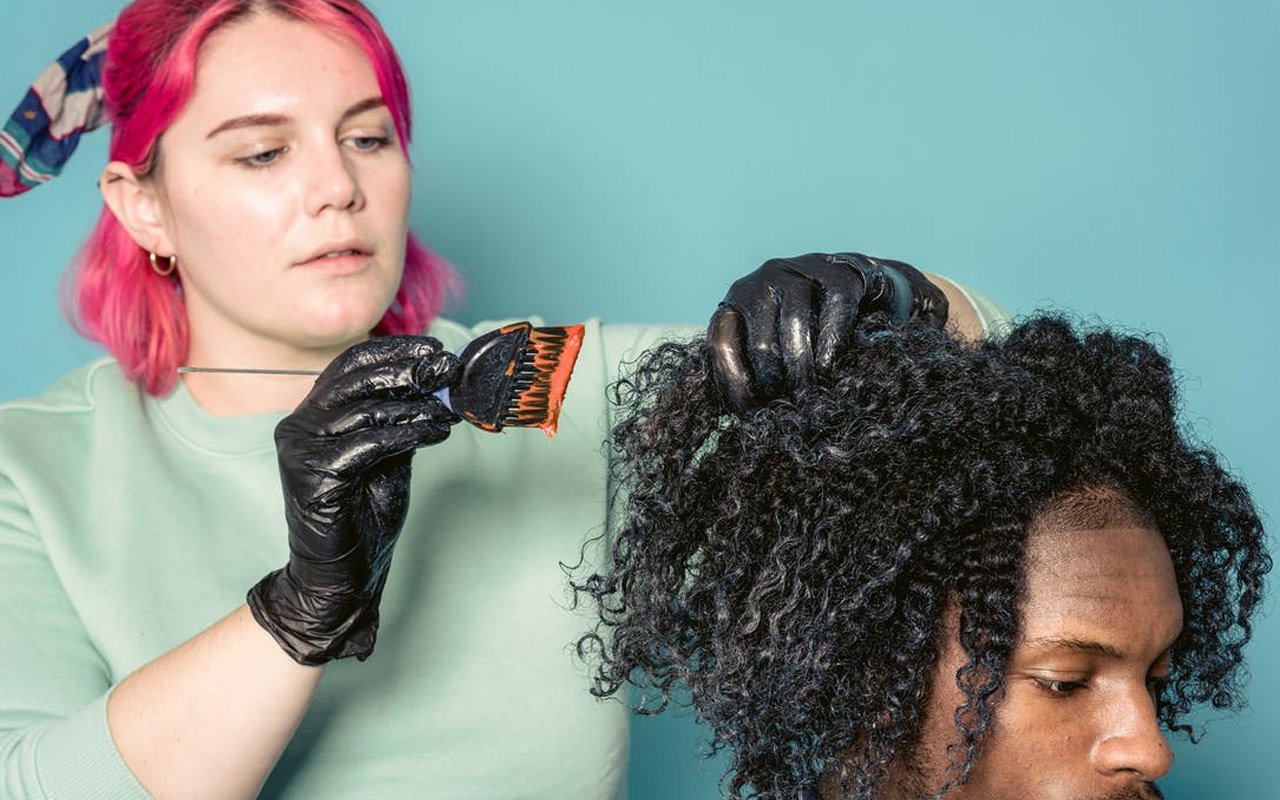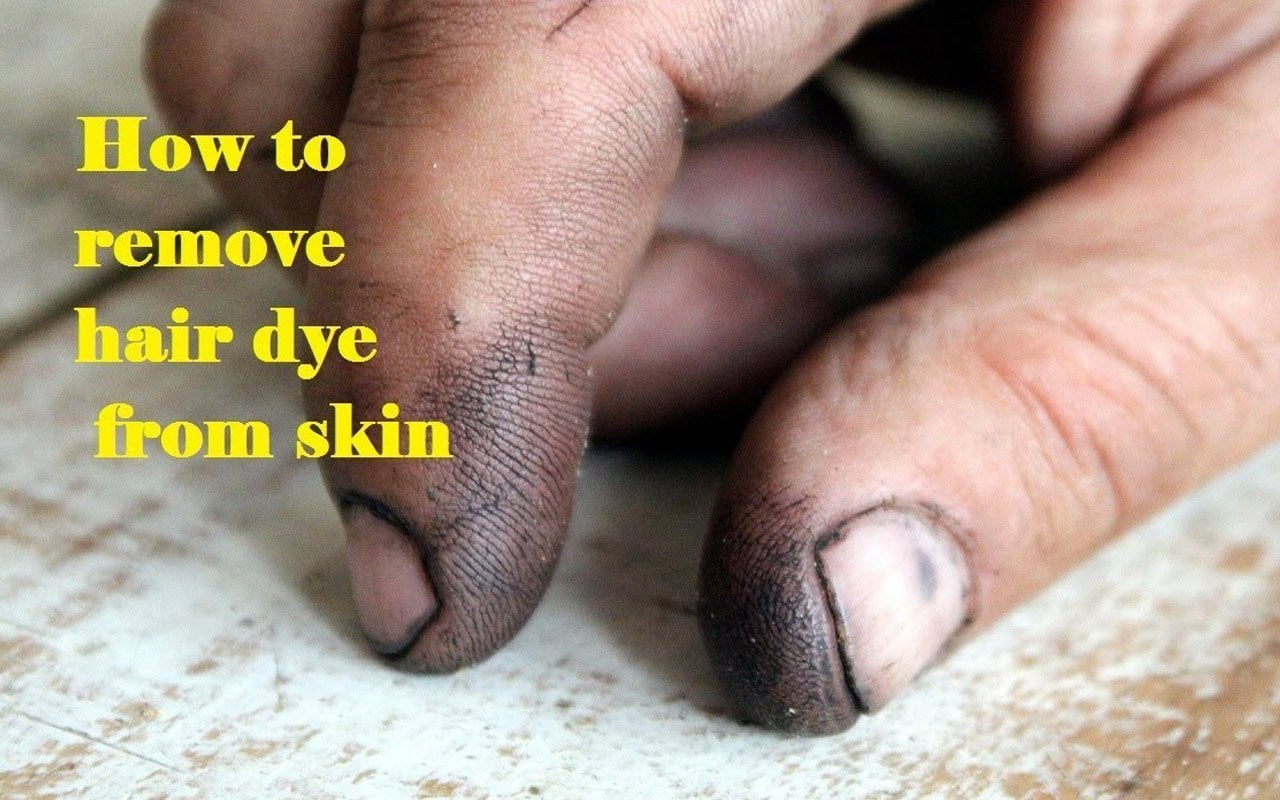Hair dye is a product that can be used by both men and women. However, if the dye is not applied correctly or if the dye is allergic to the skin, it may cause serious scars, discoloration, or causes a part of the skin to have an abnormal growth or rise compared to the surrounding skin. A lot of people dye their hair in order to maintain a certain style. However, the process of dying and removing that dye is dangerous. Fortunately, there are several methods and remedies you can use to remove hair dye from the skin. It may be difficult for some people to remove those dyes, but there are ways to remove the dyes from the skin.
It’s easy to change your hair color and is fun. Luckily modern science has brought us a long way in achieving a safer, less much-less-gross-than-urine formula for dying our hair the shade we want.
DIY hair coloring at home has many benefits. The downside to hair dyeing at home is the possibility of tainting your hands, forehead, neck, or neck. It can be very difficult to remove these stains.
Got a bit messy while dying your hair? Don’t worry! We have some solutions. We will show you how to safely remove hair dye stains from your skin.
Table of Contents
How to remove hair dye from the skin?
Hair dye has been used as a hair treatment since around the 12th century BCE. It is also a chemical to color the hair of living beings. Hair dye contains a variety of active ingredients, such as dye, bleach, stabilizers, and other auxiliary agents.
The human body’s absorption of the dye ingredients is relatively small, and most of the ingredients are excreted after metabolism in the body. But there are some people who have allergies to hair dye, causing dermatitis and other adverse reactions.
The below methods will give you some advice on how to remove hair dye off your skin.
Petroleum jelly
It is best to prevent stains from happening by applying petroleum jelly to your hairline before you start your dye job. After dyeing, petroleum jelly can be used as a stain remover.
Start by applying petroleum jelly to the stain. Use your fingertips to massage the petroleum jelly into the skin. Continue to massage the area until you see the stain disappear.
The petroleum jelly may turn the dye it is removing, which means that it is working! To prevent dye from transferring onto your skin, you can also use a makeup remover pad.
Petroleum jelly can be used on your skin and hands, but it can cause irritation to your eyes. Use a clean, damp washcloth to remove the petroleum jelly.
It should remove the hair dye stain. You can also apply petroleum jelly to the hair and allow it to soak in for a few hours. To keep petroleum jelly from staining your sheets and pillowcases, you can cover them with cotton fabrics such as a bandage or headband. Wear gloves if you are applying the jelly to your hands.
Let it fade by itself
Doing nothing is the safest way. Don’t do anything! The hair dye stains on your skin that are left behind by the dye will fade over time. Most hair dyes fade within one week.
You can wait to see if your hair dye stains aren’t visible or too large to draw attention. You are your worst critic. Just because you can see the dye on your skin does not mean others will.
Makeup Remover
Makeup remover is cheap and effective. You can get a small bottle from your local drugstore to start using. Makeup remover can be used to remove eye makeup, and protect the delicate skin around your eyes against under-eye bags, premature aging, and wrinkles.
Makeup remover can be used to remove hair dye. Rub the mixture onto a cotton ball. The stain should be left to dry for five minutes before you rinse it off.
Liquid laundry detergent
This list of remedies will cover solutions that are difficult for sensitive skin. Hair dye can cause skin damage if used in excess or too enthusiastically.
Some detergents are also suitable for lifting stains from fabric. To minimize abrasion, avoid detergents that contain dyes or fragrances. Use your fingertips to apply a little detergent to the stained skin.
Warm water can be added to the area, or a washcloth or makeup remover pads with warm water. Allow the detergent to soak in for at least half an hour.
Don’t over-scrub! This will only cause more skin damage. Blot the dye stain gently and consistently until it fades. Rinse with water. Continue to do this until the stain disappears. If it doesn’t, you can try the next dye removal technique to see if it works better.
Dish soap & baking soda
You can also use dish soap and baking soda if you don’t have a suitable liquid laundry detergent.
You can also combine equal amounts of liquid dish detergent with baking soda. Stir well until combined. The detergent lifts stains from the skin and the baking soda provides an abrasive effect (which may not be suitable for all skin types).
Baking soda can be used to scrub away dye-stained skin cells and reveal new layers of skin beneath. Use a makeup remover pad to gently scrub the solution into the skin.
After you have scrubbed for a while, rinse the area with warm water until the solution is gone. If you feel any pain, particularly a burning sensation, stop. Exfoliating too often can be dangerous!
You can repeat the process as before. The dye should become lighter with each wash. If you are still not getting the desired results, you might consider the next hair dye removal technique.
Olive oil or baby oil
Oil can be used to remove hair dyes. It helps break down the color but isn’t too harsh or abrasive. It can actually soften the skin while you scrub. Oils may not be as effective as more corrosive options.
However, it is important to care for your skin even if this means that you will accept a few hair dye stains. Apply oil to the affected area. Use your fingertips to rub it in. Do we need to remind you yet again not to get it in the eyes?
It is best to allow the oil to sit on your skin as long as you can. The oil is not corrosive nor abrasive so you can leave it on the stain for up to 8 hours. You can either sleep on your back, leave the oil to soak overnight, or you can apply it the next day.
To keep the oil from staining your sheets and pillowcases, you can cover them with cotton fabric like a bandage or headband. Wear gloves if you are applying oil to your hands.
Instead of using a warm washcloth to rub the oil, rinse your skin with running water. To remove all oil, you can use a little more shampoo or soap.
If you are still not getting the results you desire, you can try the next hair dye removal technique.
Toothpaste & toothbrush
Buy a brand new toothbrush with soft bristles. It may surprise you to learn that toothpaste can be used as a hair dye remover. Baking soda is the active ingredient in many kinds of toothpaste. Baking soda acts as a mild abrasive because of its granules.
Apply toothpaste to the hair-dyed skin. Apply the toothpaste to the area with your finger. Then, apply a thin layer of paste to the stain. Continue to rub the affected area. Depending on your skin’s sensitivity, you might try using a toothbrush with bristles, makeup remover pads, washcloth, or just your fingers to massage the area.
Rinse with warm water and dry the area. If this doesn’t work, you can use the big stain-removing guns.
Lava soap
This is where hair dye and skin stain removal become a little more dangerous. These home remedies can cause serious skin damage and are not as gentle as your regular mild abrasives. It is not worth burning your skin to get rid of hair dye stains.
Lava soap is a strong-duty cleaner. It was initially created for mechanics, painters, and construction workers. However, it is not a good option to remove hair dye from your hands.
You can apply soap to stubborn stains on your hairline by first lathering it in your hands. Next, use a cotton makeup wiper pad to rub the soap onto the skin. Make sure you don’t get any soap in your eyes. Rinse thoroughly.
Nail polish remover
This hair dye remover agent can cause serious skin reactions. The skin can become burnt if it is left in contact for too long, especially with Acetone Remover. Injuries can also be caused by nail polish remover getting in your eyes.
Begin by soaking a cotton ball in nail polish remover. Next, squeeze the excess out and apply the lotion to the stained area.
Take a break to ensure that this doesn’t cause any burns. Continue blotting the area with the cotton ball if you feel okay. If you feel comfortable, continue to rub the cotton ball gently over the stained area.
Avoid exposing your skin to the sun for longer than 30 seconds. Most skin types have a limit of thirty seconds. To thoroughly get rid of nail polish remover, rinse your skin very well.
Hairspray
Hairspray is not the best solution for all skin types! Use caution.
Spray some hairspray onto your hands to remove the stain. Then rub the affected area vigorously with your hands. Spray hairspray on the hairline to remove the stain.
The procedure should remove the stain, but you must stop immediately after feeling any discomfort.
Rubbing alcohol
If you have sensitive skin or dry skin, rubbing alcohol can cause skin irritations.
Use a small amount of rubbing alcohol to remove dye from cotton pads or cotton balls. Apply the rubbing alcohol to the affected area. After the dye has dried, rinse the skin with warm water and soap.
After dye removal, treat skin with care
Cleansers and alcohol can strip the skin of more than just dye. It is essential to moisturize your skin after you have used rubbing alcohol.
Experts recommend using a petroleum-based moisturizer, which forms a protective layer over the skin. The newest version of these moisturizers comes in light lotion formulations that won’t leave you feeling greasy.
Your skin will not be dyed for as long if the dye isn’t completely gone. Your skin will eventually shed the dye as your skin cells naturally turn over. This can happen within one to two weeks.
If you are planning to dye your hair, and need advice on hair dye ideas, please refer to the article How often should your hair be highlighted?
How to avoid hair dye stains?

You can protect as much of your skin as you like with towels and shirts that aren’t easily damaged. To protect your hands, use plastic gloves. Here are some other ways to prevent dye from staining your skin when dyeing your hair
- Protect your hands with gloves
- Use a barrier between the hairline and your hair. Before applying the dye, apply a thick layer of moisturizing cream or petroleum jelly around your hairline.
- You can wipe any spills off as you go. Use a damp cotton swab, pad, or washcloth to clean up any spillages. Removing stains right away can help prevent stains.
Consider booking an appointment at a salon if you are unable to remove the dye from your skin using at-home methods.
Specially formulated products have been created by hairdressers and color experts to remove stains. This service will cost you a small fee but should remove the stain.
Apply moisturizer or petroleum jelly around your hairline before you dye it. This will help to prevent staining.
It’s easy to remove dye from your skin if it does happen. You can also visit a salon to see a color expert if the stain doesn’t disappear after trying at-home remedies. They should be able to remove it.
Summary

Hair dye can end up on your skin regardless of whether you are coloring your hair at home or at a salon. Hair dye’s pigment is designed to penetrate the hair’s outer cuticle and stay there. This allows for long-lasting color to be infused into the shaft. It can also penetrate the skin’s outer layer to cause a semi-permanent color.
It is annoying to get dye on your skin. In rare cases, it can also cause skin irritations or allergic reactions. It could also be caused by your skincare routine. All skin types are susceptible to dye staining. However, skin that has been exfoliated with topical retinoids and products such as alpha- and beta-hydroxy acids may be more sensitive to the dye.
There are simple ways to get rid of (or prevent!) dye stains. You can remove dye stains from your skin easily. The faster you remove hair dye from your skin, the better. This will prevent the dye from setting further on your skin. For specific hair dye stains, consult our experts before you do your hair color touch-up.


